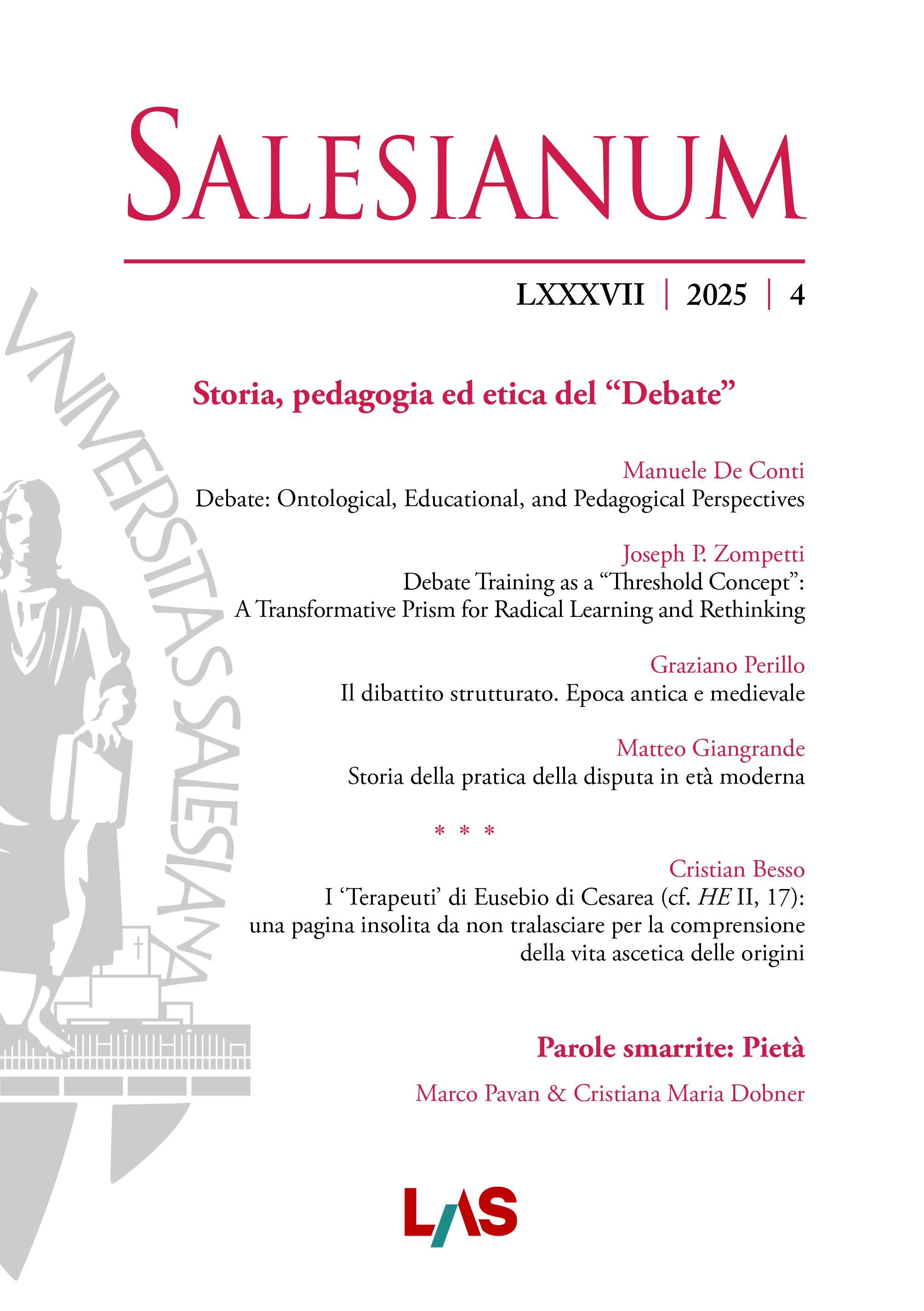La pietas come cardine della condizione umana. Tra cielo e terra, tra individuo, famiglia e comunità
Pietas as the Cornerstone of the Human Condition. Between Heaven and Earth, between the Individual, the Family, and the Community
Salesianum vol. 87 (2025) n. 4, 795-810Sezione: Commentaria
Sommario
Il termine moderno pietà ha acquisito, soprattutto a partire dalle controversie confessionali del XVI sec., un’accezione spesso negativa, legata alla contraddizione tra scrupolosità nella sfera cultuale e negligenza in quella etica e sociale. Il presente contributo cerca di ripercorrere alcuni momenti chiave della lunga storia – classica e cristiana – di questo termine, in modo tale da riscoprirne alcune dimensioni positive e feconde anche nell’ambito contemporaneo. La pietà indica quella ricerca di armonia o sintonia tra le diverse sfere dell’esistenza umana che, in Cristo, ha trovato una pacificazione e una sistemazione nuova e sorprendente.
Parole chiave
Pietas | Eusebeia | Culto | Devozione | Religiosità classica
Abstract
The modern term piety has acquired – especially since the confessional controversies of the 16th century – a frequently negative connotation, associated with the contradiction between scrupulousness in the cultic sphere and negligence in the ethical and social realm. This contribution seeks to retrace some key moments in the long history – both classical and Christian – of this term, in order to rediscover certain positive and fruitful dimensions that remain relevant even in the contemporary context. Piety denotes the search for harmony or attunement among the various spheres of human existence which, in Christ, has found a new and surprising reconciliation and ordering.
Keywords
Pietas | Eusebeia | Cult | Devotion | Classical Religiosity
